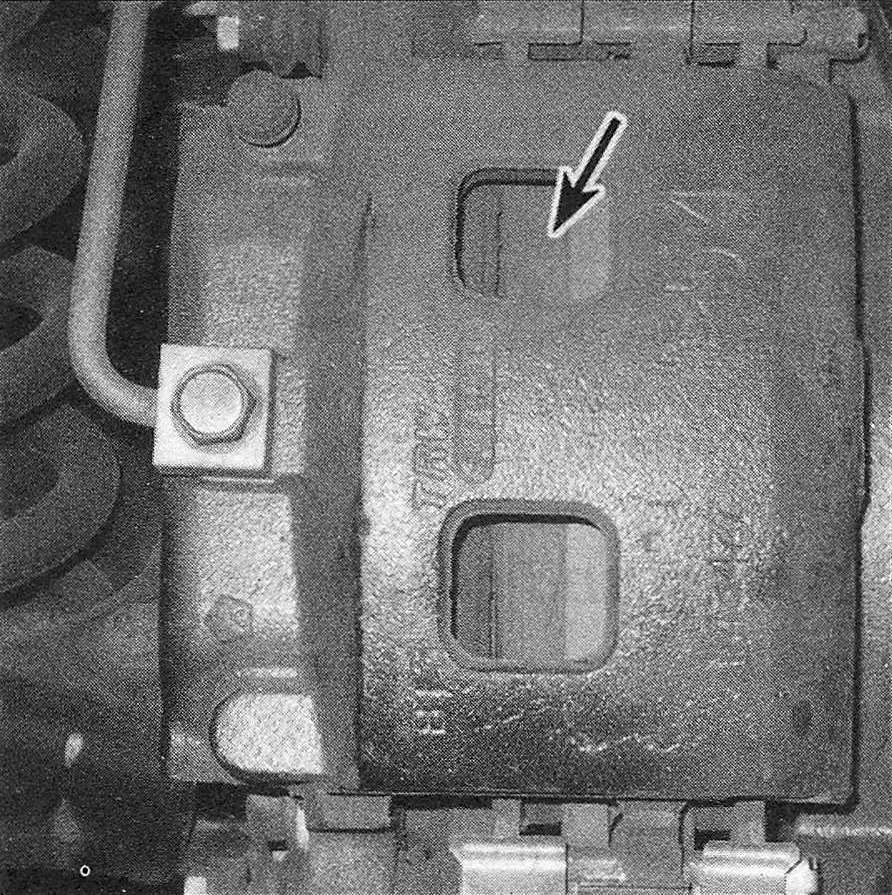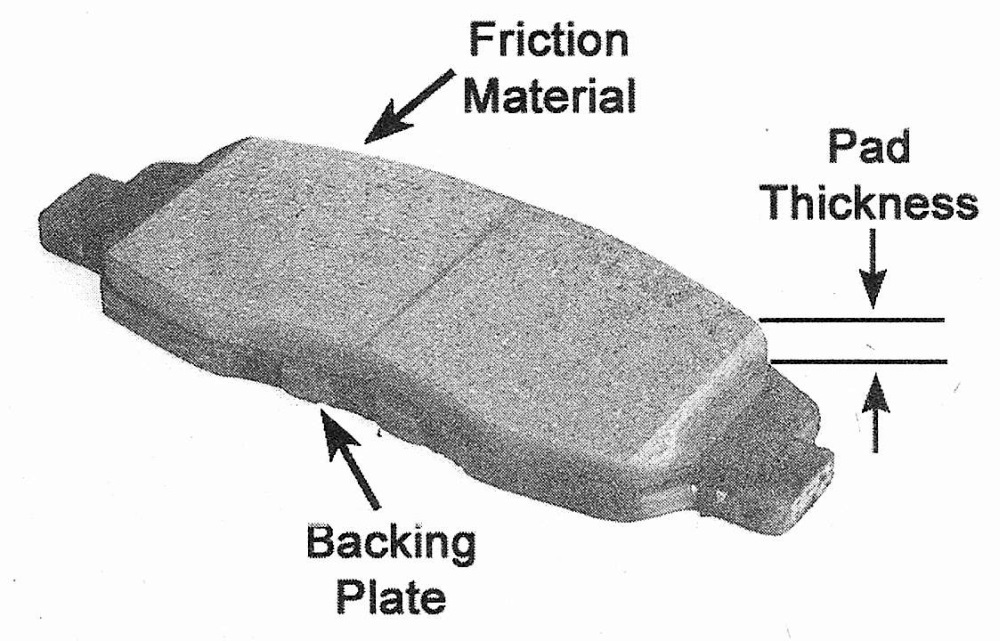Brake system check
(every 15,000 miles or 12 months)
Warning: The dust created by the brake system is harmful to your health. Never blow it out with compressed air and don’t inhale any of it. An approved filtering mask should be worn when working on the brakes. Do not, under any circumstances, use petroleum-based solvents to clean brake parts. Use brake system cleaner only!
Note: For detailed photographs of the brake system, refer to Brakes.
1. In addition to the specified intervals, the brakes should be inspected every time the wheels are removed or whenever a defect is suspected.
2. Any of the following symptoms could indicate a potential brake system defect: The vehicle pulls to one side when the brake pedal is depressed; the brakes make squealing or dragging noises when applied; brake pedal travel is excessive; the pedal pulsates; or brake fluid leaks, usually onto the inside of the tire or wheel.
3. Loosen the wheel lug nuts.
4. Raise the vehicle and place it securely on jackstands.
5. Remove the wheels (see «Jacking and towing» at the front of this book, or your owner’s manual, if necessary).
Disc brakes
6. There are two pads (an outer and an inner) in each caliper. The pads are visible with the wheels removed.
7. Check the pad thickness by looking at each end of the caliper and through the inspection window in the caliper body (see illustrations). If the lining material is less than the thickness listed in this Chapter’s Specifications, replace the pads. Note: Keep in mind that the lining material is riveted or bonded to a metal backing plate and the metal portion is not included in this measurement.
18.7a With the wheel off, check the thickness of the inner pad through the inspection hole (front disc shown, rear disc caliper similar)
18.7b The outer pad is more easily checked at the edge of the caliper
8. If it is difficult to determine the exact thickness of the remaining pad material by the above method, or if you are at all concerned about the condition of the pads, remove the caliper (s), then remove the pads from the calipers for further inspection (see Brakes).
9. Once the pads are removed from the calipers, clean them with brake cleaner and re-measure them with a ruler or a vernier caliper (see illustration).
18.9 If a more precise measurement of pad thickness is necessary, remove the pads and measure the remaining friction material
10. Measure the disc thickness with a micrometer to make sure that it still has service life remaining. If any disc is thinner than the specified minimum thickness, replace it (see Brakes). Even if the disc has service life remaining, check its condition. Look for scoring, gouging and burned spots. If these conditions exist, remove the disc and have it resurfaced (see Chapter Brakes).
11. Before installing the wheels, check all brake lines and hoses for damage, wear, deformation, cracks, corrosion, leakage, bends and twists, particularly in the vicinity of the rubber hoses at the calipers. Check the clamps for tightness and the connections for leakage. Make sure that all hoses and lines are clear of sharp edges, moving parts and the exhaust system. If any of the above conditions are noted, repair, reroute or replace the lines and/ or fittings as necessary (see Brakes).
Brake booster check
12. Sit in the driver’s seat and perform the following sequence of tests.
13. With the brake fully depressed, start the engine – the pedal should move down a little when the engine starts.
14. With the engine running, depress the brake pedal several times – the travel distance should not change.
15. Depress the brake, stop the engine and hold the pedal in for about 30 seconds – the pedal should neither sink nor rise.
16. Restart the engine, run it for about a minute and turn it off. Then firmly depress the brake several times – the pedal travel should decrease with each application.
17. If your brakes do not operate as described, the brake booster has failed. Refer to Chapter Brakes for the replacement procedure.
Parking brake
18. One method of checking the parking brake is to park the vehicle on a steep hill with the parking brake set and the transmission in Neutral (be sure to stay in the vehicle for this check!). If the parking brake cannot prevent the vehicle from rolling, it’s in need of adjustment (see Brakes).


